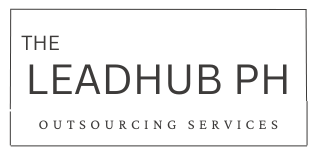In the dynamic world of customer service, businesses are increasingly turning to outbound strategies to proactively engage with their customers. Outbound customer service involves reaching out to customers rather than waiting for them to initiate contact. This approach not only enhances customer relationships but also drives business growth and brand loyalty. In this article, we’ll explore the fundamentals of outbound customer service, its benefits, and best practices for implementation.
Understanding Outbound Customer Service
Outbound customer service refers to the practice of contacting customers proactively through various communication channels, including phone calls, emails, SMS, or social media. Unlike inbound customer service, which focuses on responding to customer queries, outbound service is about anticipating customer needs and delivering solutions or information ahead of time.
Key activities in outbound customer service include:
- Proactive Issue Resolution: Identifying potential issues and addressing them before they escalate.
- Customer Follow-ups: Checking in with customers post-purchase or post-service to ensure satisfaction.
- Upselling and Cross-selling: Recommending additional products or services based on customer preferences.
- Feedback Collection: Soliciting customer feedback to improve products, services, and processes.
- Renewal and Retention Efforts: Reminding customers about subscription renewals or offering loyalty programs.
The Benefits of Outbound Customer Service
Implementing an effective outbound customer service strategy can yield numerous benefits:
1. Enhanced Customer Relationships
Proactively reaching out to customers demonstrates that your business values their experience. This builds trust and fosters stronger relationships, ultimately leading to increased customer loyalty.
2. Improved Customer Satisfaction
By addressing potential issues before they arise and providing timely assistance, outbound customer service contributes to higher levels of customer satisfaction.
3. Increased Revenue Opportunities
Outbound initiatives such as upselling and cross-selling can drive additional revenue by offering customers relevant products or services that align with their needs.
4. Reduced Churn Rates
Consistent follow-ups and engagement can help identify at-risk customers and implement retention strategies, reducing churn and maintaining a stable customer base.
5. Valuable Customer Insights
Gathering feedback through outbound efforts provides valuable data that can inform business decisions, product development, and marketing strategies.
Best Practices for Outbound Customer Service
To maximize the effectiveness of outbound customer service, businesses must adopt a strategic approach. Here are some best practices to consider:
1. Define Clear Objectives
Before initiating outbound campaigns, establish clear goals. Whether it’s increasing sales, collecting feedback, or improving retention, having a well-defined purpose ensures your efforts are focused and measurable.
2. Leverage Customer Data
Use customer data to personalize your outreach. Understanding customer preferences, purchase history, and behavior enables tailored communication, making interactions more relevant and impactful.
3. Choose the Right Channels
Select communication channels that align with your target audience’s preferences. While phone calls may work well for some customers, others might prefer emails, SMS, or social media interactions.
4. Train Your Team
Equip your outbound customer service team with the necessary skills and tools to deliver exceptional service. Training should cover communication techniques, product knowledge, and conflict resolution.
5. Maintain Compliance
Ensure your outbound efforts comply with relevant regulations, such as GDPR or telemarketing laws. Obtain customer consent where required and respect their preferences for communication.
6. Measure Performance
Track key performance indicators (KPIs) such as response rates, customer satisfaction scores, and revenue generated from outbound campaigns. Regular analysis helps identify areas for improvement and refine your strategy.
7. Adopt Technology Solutions
Leverage technology to streamline outbound operations. Customer Relationship Management (CRM) systems, automation tools, and analytics platforms can enhance efficiency and provide valuable insights.
8. Focus on Value-Driven Communication
Ensure that your outbound interactions provide genuine value to customers. Avoid overly aggressive sales tactics and focus on solving problems, meeting needs, or enhancing the customer experience.
Challenges and How to Overcome Them
While outbound customer service offers significant benefits, it’s not without challenges. Here are some common obstacles and strategies to address them:
1. Customer Resistance
Some customers may view outbound communication as intrusive. To overcome this, ensure your messages are personalized, relevant, and delivered at appropriate times.
2. High Operational Costs
Outbound campaigns can be resource-intensive. Invest in scalable technology solutions and prioritize high-value customer segments to optimize costs.
3. Regulatory Compliance
Navigating complex regulations can be daunting. Stay informed about industry standards and implement robust compliance processes to avoid legal issues.
4. Maintaining Consistency
Consistency in messaging and service quality is critical. Establish clear guidelines and monitor team performance to ensure a uniform customer experience.
The Future of Outbound Customer Service
As customer expectations continue to evolve, outbound customer service must adapt to remain effective. Emerging trends such as artificial intelligence (AI), machine learning, and predictive analytics are transforming the way businesses approach outbound engagement. These technologies enable:
- Hyper-personalization: Delivering tailored experiences based on real-time data.
- Automation: Streamlining repetitive tasks, allowing teams to focus on complex interactions.
- Predictive Insights: Anticipating customer needs and optimizing outreach efforts.
Moreover, the integration of conversational AI and chatbots into outbound strategies is enhancing customer interactions by providing instant responses and seamless support.
Conclusion
Outbound customer service is a powerful tool for businesses seeking to build lasting relationships, improve customer satisfaction, and drive growth. By adopting a strategic approach, leveraging technology, and focusing on value-driven communication, companies can unlock the full potential of outbound engagement. As the landscape continues to evolve, staying ahead of trends and embracing innovation will be key to sustained success.

